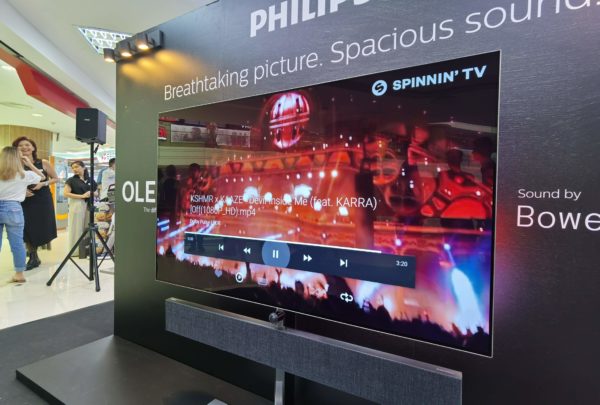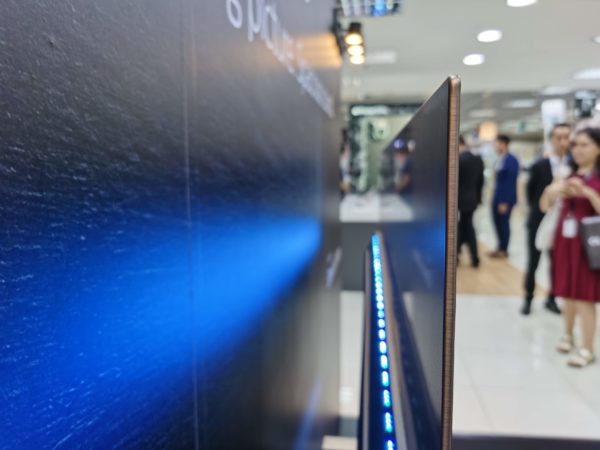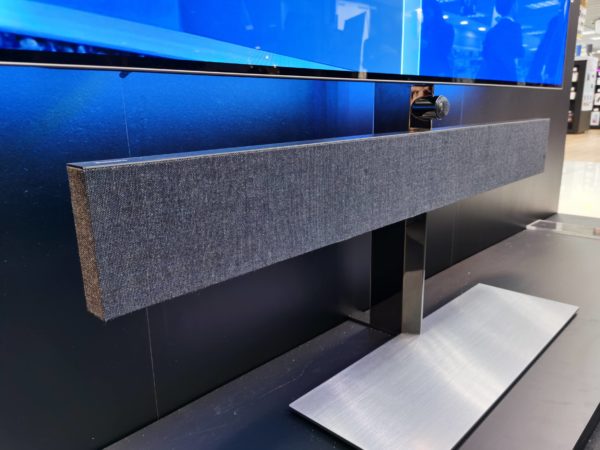The number of 65-inch OLED-based 4K TVs has increased over the years. LG has dominated this space for quite some time and now is followed by Sony and even the budget Chinese brand Hisense has its OLED TVs models.
Facing a tough market, Philips has its work cut out for it trying to differentiate itself from the rest of the pack.
In the latest model launched this week in Singapore, the OLED+ 984 TV, the Dutch company looks to additional features such as improved audio and lighting effects to add to OLED’s much-praised picture quality.

The picture quality coming from OLED technology has always captivated viewers. With deep blacks, vibrant colours and eye-capturing contrast, it means watching any content has always been a pleasure. Here, Philips’ OLED+ 984 TV did not disappoint, either.
Part of the reason why the TV looks so good is due to the new P5 Pro Picture processor. It is able to support HDR, Hybrid Log Gamma, HDR10+ and Dolby Vision formats, making it a very versatile TV for any content.
It can also upscale standard definition content to 4K resolution with better colours and sharper images while reducing noise.
When I looked at 1080p Full HD clips on the OLED+ 984 TV during a launch here in Singapore earlier this week, the image quality presented was only just a tad worse off than native 4K video files. I was quite impressed.

The Dutch company’s Ambilight technology is also heavily featured in its new premium TV, with all four sides of the screen covered with strips of “intelligent” LEDs.
They cast colours that match what you see on the screen onto the wall behind the TV. Besides the fancy look, Philips also claims this feature will prevent eye-strain after prolonged viewing of the TV.
Good movie experience not only relies on good image projection but also the audio performance of the TV. Here, Philips has tied up with British hi-fi company Bowers & Wilkins to design OLED+ 984’s sound system.
The most obvious element of this system is the tweeter sitting right in the middle of the soundbar. This has a subwoofer, tweeters and full-range drivers being housed in individual left and right speaker enclosures covered with a wool-blend fabric to better separate the left-right channels.
I heard the TV at a noisy electronics store in Bishan but I could still make out the individual sounds from the video source.
While playing a Dolby Atmos demonstration clip, the soundstage was clearly enlarged with good surround sound effect, and that was without using any satellite speakers.
Those who are not keen to set up multi-speakers for surround sound, especially in Singapore’s small apartments, will welcome this.

While the sound quality from the speakers is impressive, I would like to have the option to separate the left and right speakers if there is space in the living room. Splitting the speakers further from the TV should improve the sound further.
Then again, no Netflix 4K shows, which is accessible from the SmartTV, were used to demonstrate the TV’s full capabilities during the demo for the media.
If you’re buying a new TV, especially a premium one, make it a point to test it with your favourite content first before plonking down the money. After all, the Philips OLED+ 984 TV, which comes only in 65 inches in Singapore, costs a cool S$6,999.






